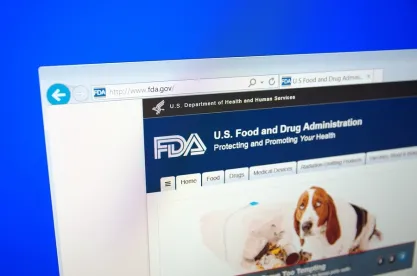Two draft guidances issued together late last month seek to increase both clinical trial efficiency and the amount of information that is available about a drug’s safety and benefits. The two draft guidances address, respectively, adaptive designs and master protocols. This blog post discusses FDA’s recommendations for adaptive designs; master protocols will be addressed in a subsequent blog post.
An adaptive design is a “clinical trial design that allows for prospectively planned modifications to one or more aspects of the design based on the accumulating data from subjects in the trial.” The ability to make changes to a study in progress allows investigators to take into account new information that was not known when the study began. According to FDA, adaptive designs can both provide a greater chance to detect a true drug effect and reduce the number of patients exposed to ineffective investigational treatments (since effectiveness will be more easily detected earlier in the trial). Because adaptive designs allow for greater flexibility, they also may be more acceptable to those conducting and those participating in clinical trials. For sponsors in particular, adaptive designs can potentially both save time and reduce costs. Adaptive design can also have ethical advantages by facilitating early termination of trials once it becomes clear that a trial is unlikely to demonstrate effectiveness, thereby minimizing risk to participants.
At the same time, the draft guidance recognizes that adaptive designs increase the risk of “Type I” (false positive) errors, i.e., concluding that a drug has a beneficial effect when it does not. To mitigate this risk, the draft guidance recommends sponsors employ methods to determine appropriate statistical thresholds for interim and final analysis to ensure that the overall Type I error is controlled at 2.5 percent. Similarly, the draft guidance acknowledges the risk of bias that can result from early unblinding of a study, and recommends limitations on who may access such data to mitigate this risk.
A key element of adaptive design is pre-specification (i.e., planning in advance), including pre-specification of the number and timing of interim analyses, what statistical methods will be used to interpret the interim data, and how the study design will be changed depending on the results of such analyses. Failure to pre-specify can result in the introduction of bias and thereby put the quality and integrity of study data at risk. Therefore, FDA strongly recommends that prespecified protocols are included in the clinical study design to ensure that access to comparative interim results are limited to individuals with relevant expertise who are independent from personnel involved in conducting or managing the trial.
Because adaptive designs introduce certain added complexities, FDA recommends that sponsors provide additional information when submitting a protocol for FDA review, including a detailed description of the monitoring and adaptation plan, information on who will be responsible for implementing the adaptive design, pre-specification of the statistical methods to be used, and a comprehensive written data access plan to maintain data integrity and quality.
The new adaptive designs draft guidance supersedes an earlier draft guidance issued in 2010. At that time, adaptive designs were in their infancy, and proponents of adaptive designs viewed FDA’s initial guidance as a first step in considering how best to integrate them into clinical trials to support FDA regulated products and recommended that FDA guidance evolve in response to greater experience with the use of different adaptive study designs. The new draft guidance reflects such evolution in FDA’s thinking; for example, in acknowledging the potential adverse impact arising from Type I error and in eliminating confusing categorization of “well understood” and “not well understood” adaptive design methods in favor of a more focused assessment of factors, such as unblinding, that can increase risk of bias.
FDA encourages sponsors to consider and discuss prospective design options with FDA. Clinical trial sponsors and other stakeholders may want to consider the potential impact of the new guidance on their approach to clinical trials, and to submit comments to the FDA. The deadline for submitting comments is November 30, 2018.



 />i
/>i

